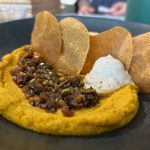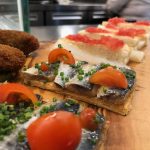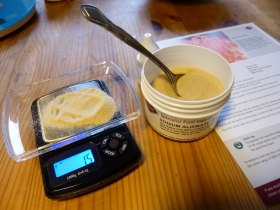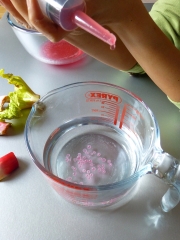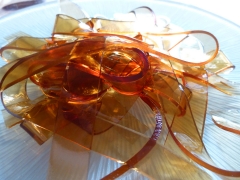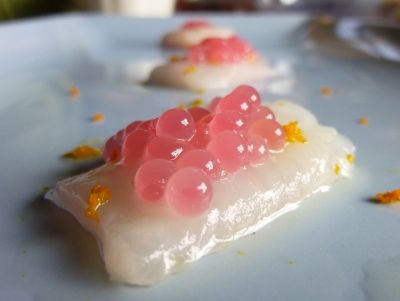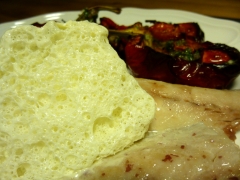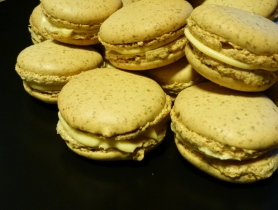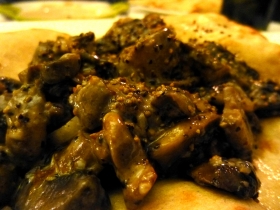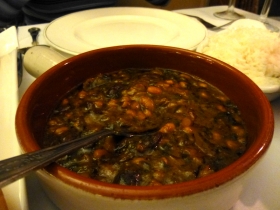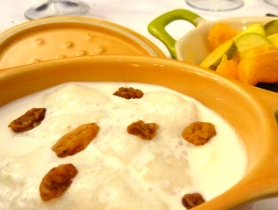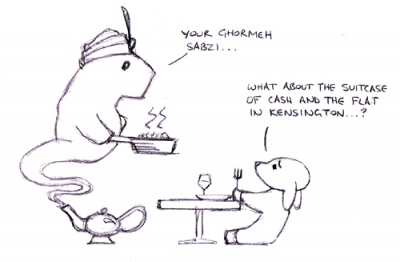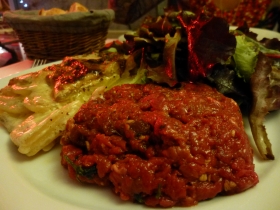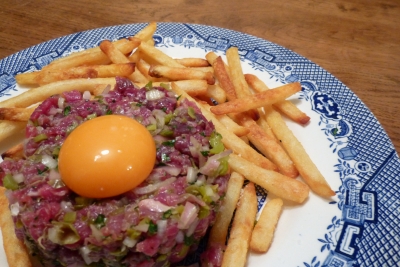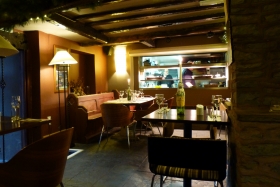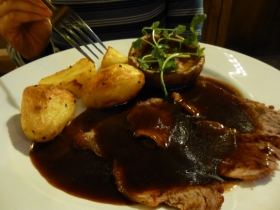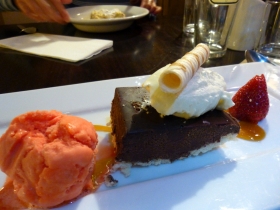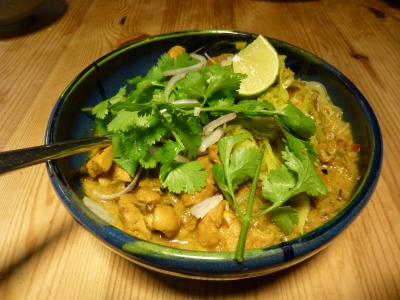I got a Molecular Gastronomy Kit for Christmas! So once the enormous glut of seasonal food was chewed down to the last couple of mince pies and the final gobbet of Christmas pudding it was time to start playing the mad scientist…
The kit is the MSK Molecular Gastronomy Starter Kit and while I haven’t actually seen or tried any other starter kits, I have to say that this one seems to have some strong advantages. For a start, they supply enough of each chemical additive for at least ten recipes, so after you’ve mastered the process you’ve got lots left to wow your friends when you invite them over for a soiree. They also give you the absolutely essential tools you’re unlikely to have in your kitchen: electric scales that measure down to 0.1g and a couple of big syringes. Then there’s a professional recipe making use of each additive, printed on glossy cards; perfect for proving the theory before going off on a Willie Wonkaesque blaze of experimentation.
Just to be crystal clear: this was a Christmas present from my lady, I’m not “reviewing” a freebie.
So the first thing I tried was some rhubarb spherifications, ‘cos there isn’t much that’s cooler than a spherification. Heck, Michelin-starred chefs will serve you up pea spherifications which are pea-shaped things that taste of peas. So, basically, peas with extra hassle. That’s how much Michelin-starred chefs love to spherify things!
Anyway, it failed horribly. My little spheres looked great in the magic solution, but collapsed into pink goo when I fished them out. I used almost every implement and vessel in the kitchen in search of a combination that would result in salvagable spheres, but ended up with nothing more than a huge mountain of washing up.
Some internet research led me to two conclusions: (1) by using apple juice for poaching my rhubarb (my usual method) I was making the liquor more acidic, (2) by poaching in just a splash of juice, I ended up with a liquor that was too thick. I made a third conclusion myself: molecular gastronomy is not a game for the “instinctive” cook, at least not until you’ve learned the science!
Indeed, although the recipe cards are neat they don’t explain any of the why’s and wherefore’s of molecular gastronomy: “300ml rhubarb poaching liquor” is all it says. It takes a lot of reading (Google or a big fat book) to discover that acidity ruins spherification and that the liquor to be spherified needs to be of low viscosity. Yes, this is rocket science. Research isn’t like Googling “chocolate fondant recipe” and skim-reading a few until you find one you like. You put in search terms like “problem with sodium alginate spherification” and soon find yourself staring at scientific papers
on electrolyte capture and hypertension in alginates, including spidery molecular diagrams of chemical compounds that would make Professor Frink blink.So I got cross with the Sodium Alginate and abandoned it in favour of Gellan Gum. Five minutes and only two ingredients later I had a beautiful plate of glistening Madeira jelly noodles. Wow. Less effort than making a hot chocolate and results that might have diners cooing in wonderment. Even more so because this Gellan Gum jelly is heat tolerant, so these noodles wouldn’t melt if I served them in a bowl of hot ham broth!
Today I’m back to the spherifications. I corrected both the things I thought were wrong and got to work again with the chemistry lab. An hour later and I have my first perfect little glistening spheres of translucent pink, ready to plate on neat little pieces of sashimi. Here’s the hero shot:
Next stop, the land of heat-tolerant and freezable foams! Who thinks frozen shards of gin-and-tonic foam on top of a lime posset sounds good? Yep, I’ve already wandered away from the printed recipes and into Wonka-land. I settled on trying for a frozen horseradish foam to top some mackerel. This used some nifty stuff called “Sucrose ester” which is so seldom used that I could only find one recipe on the whole internet. So I read that, and I read the recipe card from the kit, and I read up a horseradish foam that used a different additive,
and I mixed the three recipes together to see what happened. It… sort of worked. To be honest, I’d be bemused if I was served a lump of this in a restaurant.I cheered myself up by making pistachio macarons using the “Hy-foamer”, brilliant stuff that will stabilise egg whites even if you add straight lemon juice to them. They came out beautifully. Which means I’m running at about 50/50 successes and failures so far.
So, a molecular gastronomy starter kit. Good investment? If you like cooking and are intrigued at how the top chefs do it, definitely. But as an instinctive cook, I would say that it is definitely not for instinctive cooks! There’s precision involved here, and straying from professional recipes is as likely to result in a deflated mess as it is in whooping and air-punching. I also have to say, a lot of it runs
contrary to my distaste for waste. You make up plenty of bases, be it rhubarb liquor to spherify or horseradish sauce to foam, and then you use perhaps 20% of it making your molecular wonders before ditching the rest. Hmm. Finally, at the end of the day you are mainly creating fripparies, garnishes. I’d be the first to say that a spoonful of watermelon caviar and a lemongrass foam are far more delicious and impressive than a shred of lettuce and some salad cress, but garnishes aren’t normally the domain of the home cook, even an inventive one.Nevertheless I’ve been enjoying myself, and slowly mastering the techniques. When it works the results are good enough to make me SQUEE! with delight, so I’m almost certainly going to be cranking out something spiffy whenever I’m entertaining friends to dinner. This is one Christmas gift that isn’t going to just migrate quietly to the back of the corner cupboard.


